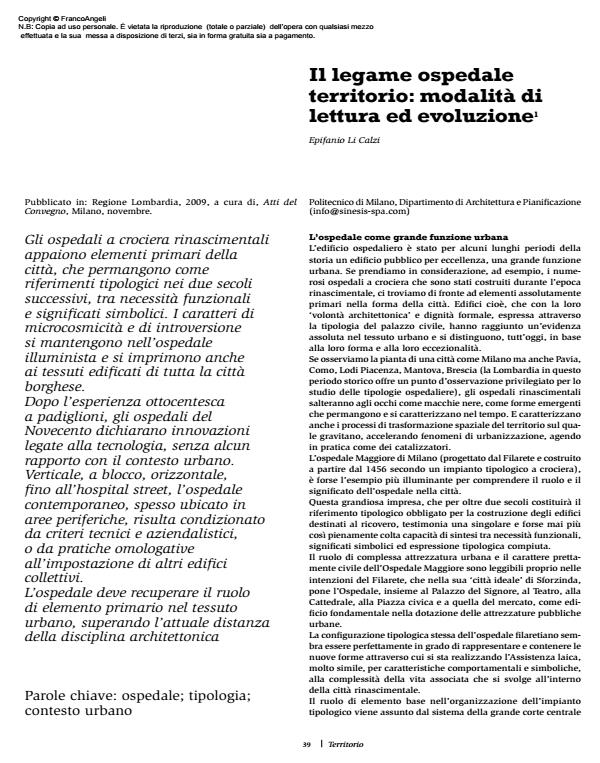Il legame ospedale territorio: modalità di lettura ed evoluzione
Titolo Rivista TERRITORIO
Autori/Curatori Epifanio Li Calzi
Anno di pubblicazione 2011 Fascicolo 2010/55
Lingua Italiano Numero pagine 8 P. 39-46 Dimensione file 501 KB
DOI 10.3280/TR2010-055007
Il DOI è il codice a barre della proprietà intellettuale: per saperne di più
clicca qui
Qui sotto puoi vedere in anteprima la prima pagina di questo articolo.
Se questo articolo ti interessa, lo puoi acquistare (e scaricare in formato pdf) seguendo le facili indicazioni per acquistare il download credit. Acquista Download Credits per scaricare questo Articolo in formato PDF

FrancoAngeli è membro della Publishers International Linking Association, Inc (PILA)associazione indipendente e non profit per facilitare (attraverso i servizi tecnologici implementati da CrossRef.org) l’accesso degli studiosi ai contenuti digitali nelle pubblicazioni professionali e scientifiche
Renaissance cruciform hospitals appeared as primary features of cities and remained as distinct types in the following two centuries, meeting functional needs, but with symbolic meaning. The micro-cosmos and introversion characteristics were maintained in the enlightenment hospitals and they also made an impact on the built fabric of the whole city. After the pavilions of the nineteenth century, the hospitals of the nineteenth century launched technological innovations which had no relationship with their urban context. In the form of vertical or horizontal blocks and even hospital streets, contemporary hospitals, often located in peripheral areas, are conditioned by technical production criteria or by standardisation criteria applied to other collective buildings. Hospitals must recover their role as a primary feature of the urban fabric and abandon their current distance from the discipline of architecture.
Parole chiave:Hospital; typology; urban context
Epifanio Li Calzi, Il legame ospedale territorio: modalità di lettura ed evoluzione in "TERRITORIO" 55/2010, pp 39-46, DOI: 10.3280/TR2010-055007